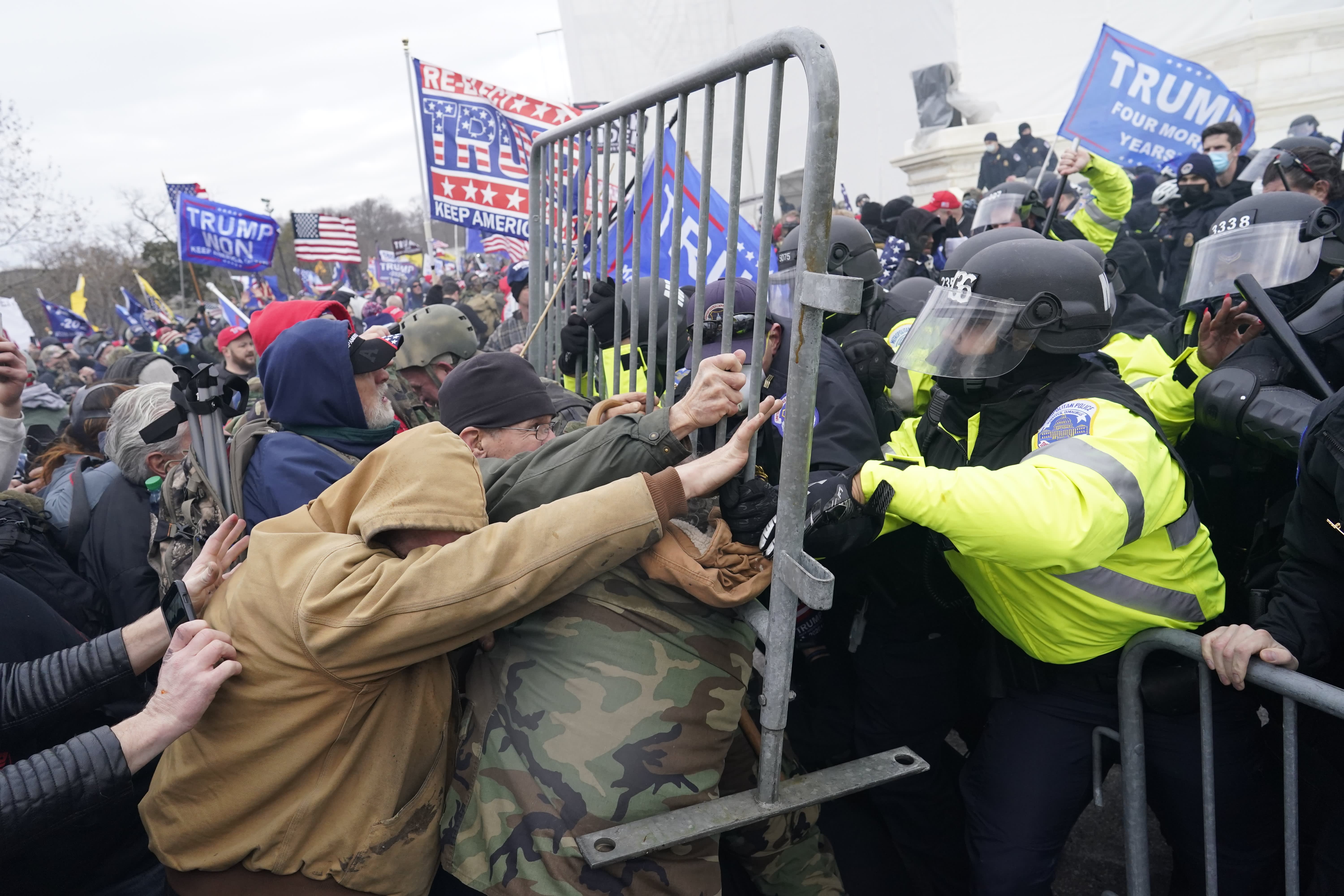Protesters gather on the second day of pro-Trump events fueled by President Donald Trump’s continued claims of election fraud in an to overturn the results before Congress finalizes them in a joint session of the 117th Congress on Wednesday, Jan. 6, 2021 in Washington, DC.
Kent Nishimura | Los Angeles Times | Getty Images
It was the last straw.
Following the takeover of the U.S. Capitol Wednesday by a crowd of pro-Trump supporters, Twitter and Facebook pulled the plug on President Trump’s accounts, suspending him from posting based on the fear that his messages would incite even more violence than we already saw in the halls of Congress.
But Wednesday was hardly the first time Trump has violated policies on social media that would get a normal person banned. Wednesday’s events were an inevitable conclusion thanks to the conspiracy-laden chatter in the darker corners of the internet that social media companies allowed to freely spread.
Over the course of Trump’s presidency, Facebook and Twitter rewrote their policies to give the president more runway to say dangerous things under the guise that it was important for the public to know the stream-of-consciousness thoughts from world leaders. These policies were clearly designed around Trump’s online behavior and gave him the freedom to spread messages of hate, conspiracy and violence.
At best, those policies simply enabled Trump’s lies and calls for violence. At worst, they let those dangerous messages go viral and be believed by enough people who were willing to break down the doors of the Capitol on Wednesday.
For years, tech industry observers speculated what the final straw would be: What Trump would have to say or do in order for tech platforms to limit his messages on social media?
Now we know.
It wasn’t threats of nuclear war. It wasn’t veiled threats that racial equality protesters would be shot last summer. It wasn’t any of the numerous lies about the results of our last election. It was only after the president’s words resulted directly in a storming of the Capitol building by a mob of his supporters that the tech platforms took real action and blocked Trump from posting, at least temporarily. Twitter went as far as to say that Trump would be permanently banned if he violated the company’s safety policies again after his suspension.
It’s worth a brief history lesson on how we got here. It wasn’t until 2020, more than three years into Trump’s presidency, that Facebook and Twitter started labeling Trump’s messages with fact-check links and safety warnings. And that was mostly spurred by Trump’s messages on the George Floyd protests and false claims about the legitimacy of mail-in ballots in the months before the election last November. Trump was unchecked on social media for the vast majority of his presidency and given free reign to oxygenate the worse impulses of his followers as a result.
Now there will be a reckoning.
In the weeks to come, we’ll have to look at social media’s role in enabling the darkness we witnessed on Wednesday. Facebook and Twitter’s approach that a world leader should get free reign to say whatever they want without consequence ignored the fact that a president’s words have great power and influence over the people who see them. Over the years, Trump’s social media habit fueled anger and resentment among his followers, finally crescendoing into the violence we saw in the Capitol.
For those watching closely though, this wasn’t a surprise. The same conspiracies and lies that fueled the mob on Wednesday began in the dark corners of the internet, found their way to major social platforms and were repeated by mainstream conservative outlets. The conspiracies were funneled to a president who was already inclined to believe them and spread them across his social accounts, creating a loop of false and dangerous information that fed on itself.
Those lies continue today. Almost as soon as the mob breached the Capitol, conspiracy theorists postulated online that the people who stormed the Capitol on Wednesday weren’t Trump supporters, but liberal activists posing as Trump supporters. In a matter of hours, that message made it from Twitter to the floor of the House of Representatives, when Rep. Matt Gaetz (R-Fla.) made the same false claim in his comments objecting to the certification of Joe Biden’s election. He backed up his assertions by citing reports from a bogus facial recognition company that claimed it identified antifa members in the mob.
That’s how quickly the online conspiracy ecosystem operates. The mob had barely entered the Capitol before the next lie started taking a firm hold online. Within hours, we had at least one elected representative believing and repeating it. And you can bet the “actually, it was antifa that stormed the capitol” narrative will take over conservative media by the end of Thursday. And the president himself will surely be ready to share those conspiracies across social media when he’s allowed to post again.
It’s the same pattern we’ve seen over and over again throughout the Trump presidency. If anyone, especially those in Trump’s close orbit, is saying they’re surprised about what happened Wednesday, then they either weren’t paying attention or dismissed it all as unserious chatter online.
But we learned Wednesday the online threats were serious and online conspiracy theories were enabled by the president. And they were enabled by social media companies’ Wild West attitude towards allowing false information to reach millions on their platforms and feed the violence.
